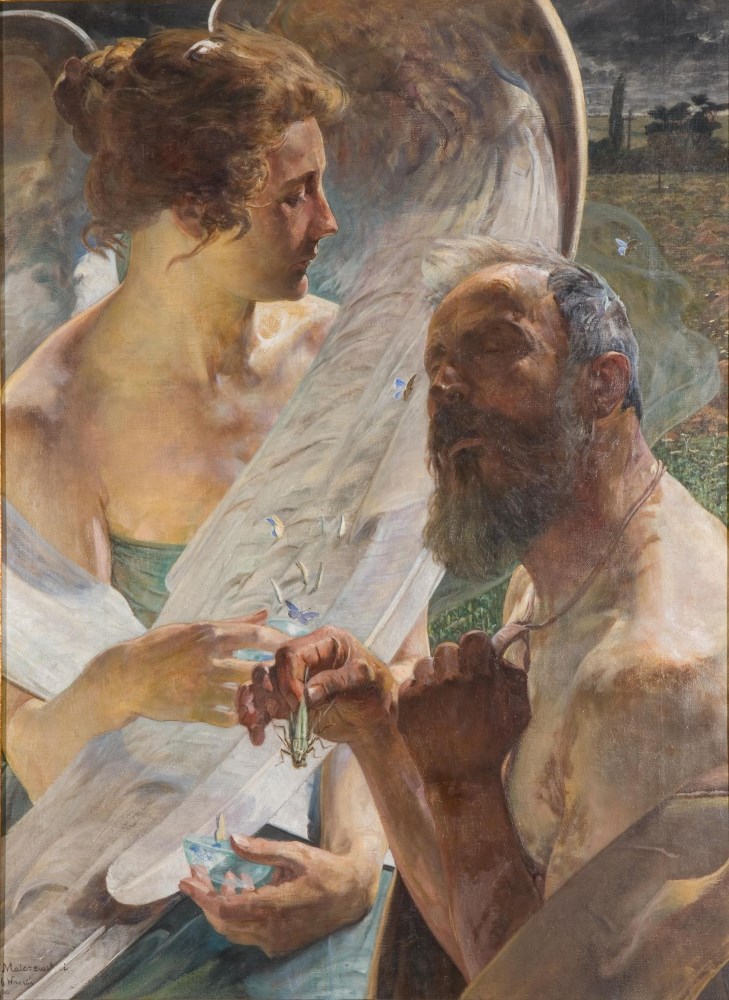Description:
Jack Malczewski (1854-1929) inherited a love for art and romantic literature, particularly the poetry of Juliusz Słowacki, from his family home. He came from a noble but not wealthy family. His father Julian supported him in his career as a painter. The events of 1863, the January Uprising and subsequent repression, had a particular impact on the young artist. His first teacher was Adolf Dygasiński. From 1867 to 1871, he spent his youth in the manor house of his uncle and aunt, the Karczewskis, in Wielgie. In 1873 he began his studies at the Academy of Fine Arts in Krakow under the tutelage of Jan Matejko. He was a student of Władysław Łuszczkiewicz. He also studied at the École des Beaux–Arts in Paris. He traveled to Italy, Vienna, Munich, Greece and Minor Asia. From 1896 to 1900 and 1910 to 1914 he was a professor at the Academy of Fine Arts in Krakow. From 1912 to 1914 he was its rector. He began with a romanticizing realism, then naturalism; the prevailing theme of his work in this period was the fate of exiles in Siberia and the inspiration of Juliusz Słowacki‘s “Anhellim“. At the same time, fantastic and allegorical elements began to appear in Malczewski‘s work. After his father‘s death in 1884, the recurring theme in Jacek Malczewski‘s work was Thanatos – the god of death. After 1890, his art became thoroughly symbolic. Works manifesting the turn towards Symbolist style are: “Introduction“ of 1890, “Melancholy“ from 1890–1894, and “Vicious Circle“ from 1895–1897. The artist addressed existential, historical and artistic topics, interweaving ancient and Biblical themes with local folklore and the Polish landscape, which was so important in his work. Form, color, monumentality of representations and their expressiveness became his trademark.
Description of the painting:


